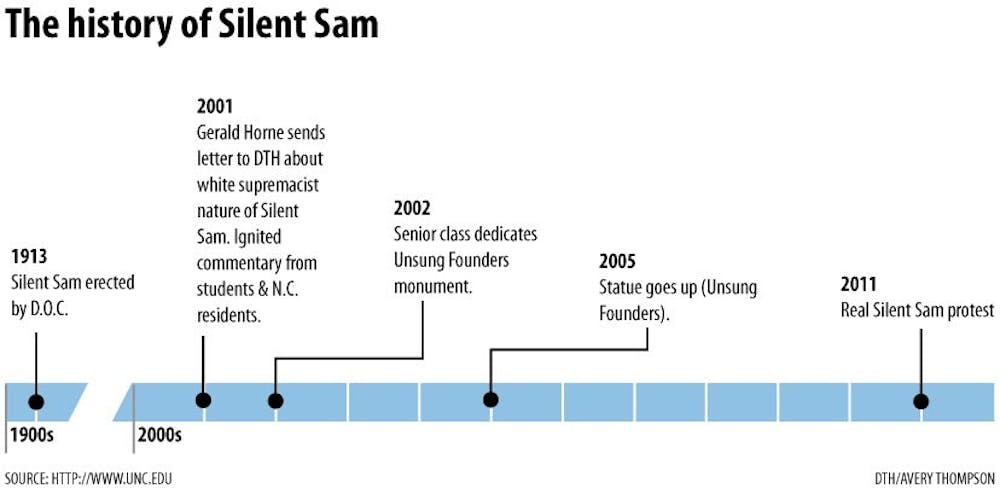Despite his name, Silent Sam’s history sparks heavy-handed conversation every few years, and this year is no exception.
The statue in McCorkle Place has again sparked community-wide debate about the implications of having a monument to the Confederacy so prominently placed on campus.
But despite outrage from some, the monument has never been seriously threatened, at least during the past few decades.
Bruce Carney, executive vice chancellor and provost, said he has heard of no formal petition to remove the statue in his 31 years at the University.
On Sept. 1, a group called the Real Silent Sam movement, composed of concerned community members and students, held a protest to attract attention to the statue’s history.
Senior Will McInerney, a member of the movement, said the group wants to start a discussion about monuments with racist backgrounds.
“The naming of buildings and erection of monuments with complex and potentially racist undertones is an issue that warrants discussion and creative solutions,” McInerney said.
Silent Sam was erected by the United Daughters of the Confederacy in 1913 as a monument honoring University students and faculty who served in the Confederate army.
Julian Carr, a Confederate veteran who gave the dedication speech in 1913, not only thanked Confederates for their sacrifice, but also praised the soldiers for helping preserve “the Anglo-Saxon race.”



